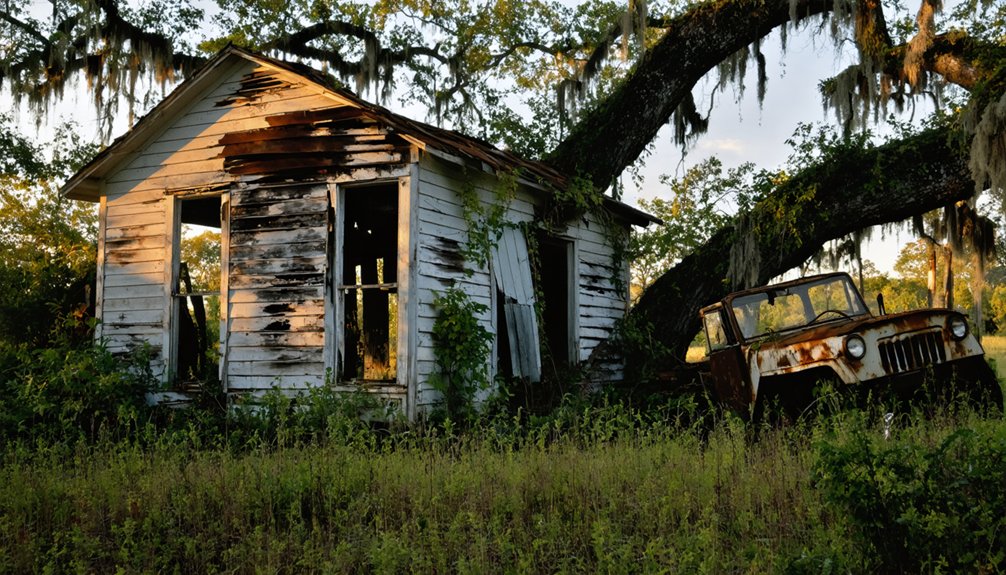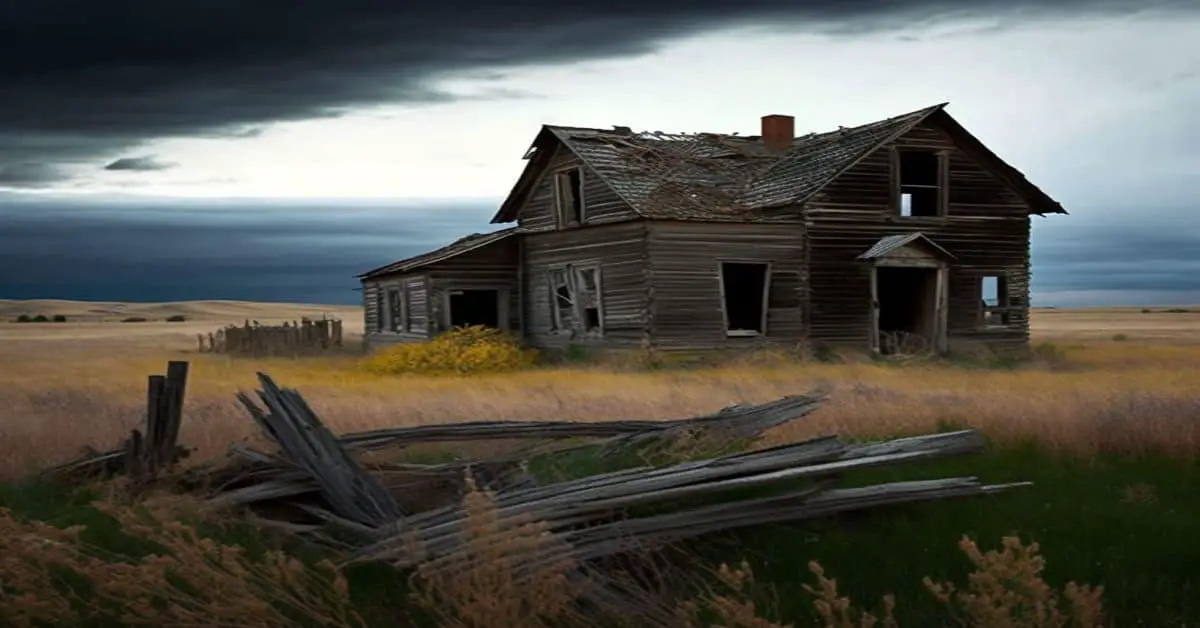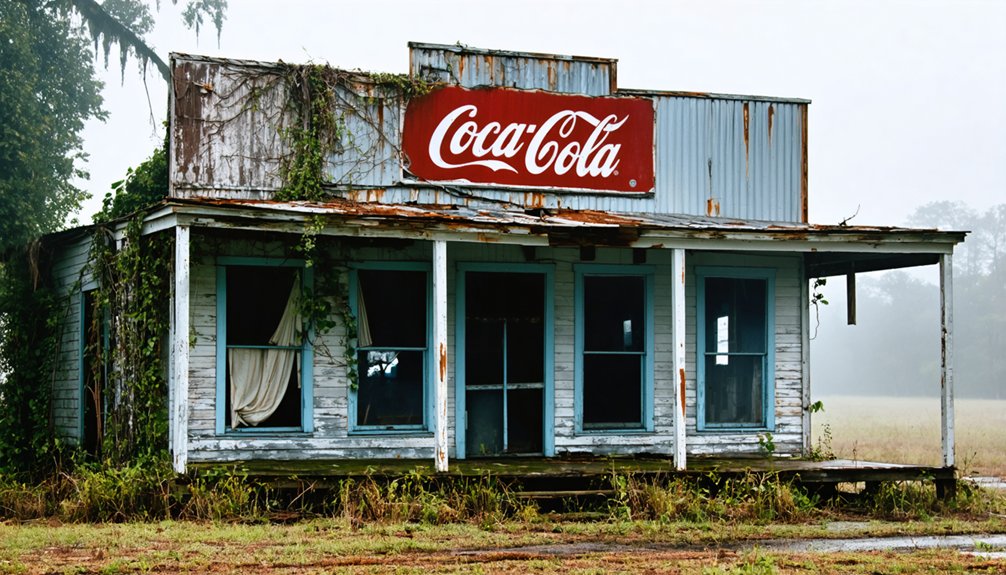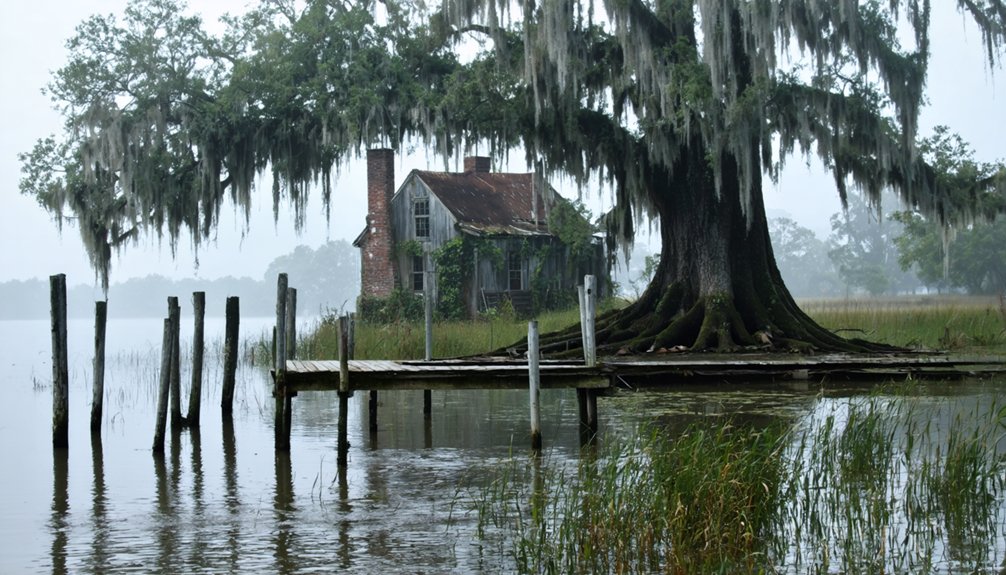You’ll find Albany’s ghost town remnants in Louisiana’s Caddo Parish, where it once thrived as a bustling steamboat settlement. The town’s economic backbone relied on timber operations and river trade, with vessels like the ANNIE WAGLEY connecting it to crucial commercial routes. Since the 1970s, the area has gained notoriety for the mysterious “Albany Light” phenomenon, drawing paranormal enthusiasts. The town’s transformation from prosperous hub to abandoned settlement holds deeper secrets about Louisiana’s evolving landscape.
Key Takeaways
- Albany was once a thriving steamboat settlement at the convergence of waterways in Louisiana’s Atchafalaya Basin during the 19th century.
- The town’s decline began with the closure of major lumber operations and shift of commercial activity to other regional centers.
- The mysterious Albany Light phenomenon, first reported in the 1970s, has become a significant part of the ghost town’s folklore.
- Albany’s transformation from bustling community to ghost town illustrates broader economic challenges affecting rural Louisiana communities.
- The site now attracts cultural tourists and ghost hunters, drawn by both its historical significance and reported paranormal activity.
The Rise of a Steamboat Settlement
Situated at the strategic convergence of navigable waterways in Louisiana’s Atchafalaya Basin, Albany emerged as an essential steamboat settlement during the 19th century.
Similar to historical homes that now characterize most of Washington, Louisiana, you’ll find Albany bustling with activity as steamboats, from sternwheelers to sidewheelers, navigated the complex network of rivers. Vessels like the ANNIE WAGLEY sidewheeler regularly traversed these waters, connecting the settlement to vital trade routes. The settlement’s prime location made it a vital hub connecting interior Louisiana to major ports like New Orleans.
River navigation demanded skilled pilots who could maneuver through shifting channels and sediment-filled waters.
Mastering the ever-changing river required expert pilots to guide vessels safely through treacherous waterways and accumulating silt deposits.
You’ll appreciate how steamboat technology, with its multiple-boiler systems, revolutionized travel and commerce in the region. Before railroads changed everything, Albany’s economy thrived on the constant flow of timber, agricultural products, and manufactured goods, making it an indispensable link in Louisiana’s commercial network.
Mystery of the Albany Light
You’ll find that the Albany Light phenomenon, which first gained notoriety in 1970s Livingston Parish, sparked numerous eyewitness accounts of a mysterious glowing cloud in remote wooded areas.
Local folklore attributed the ethereal light to disappearances of women and children, though no police records or physical evidence ever substantiated these claims. The small town shares its name with several other communities across America, including Albany, Georgia, where significant civil rights history was made. The surrounding landscape features a remarkable natural spring that creates a radiant blue appearance when afternoon sunlight hits the water.
While investigative reporter Nicholas R. Murray and groups like Dale Hoover’s team conducted informal explorations of the phenomenon, the absence of scientific analysis or documented evidence has left the Albany Light’s true nature unexplained.
Eyewitness Reports Through Time
Throughout the 1970s, the mystery of the Albany Light captivated residents across Livingston Parish, Louisiana, as numerous eyewitnesses reported encounters with an unexplained glowing phenomenon.
The most notable eyewitness experiences came from a group of students who, inspired by local newspaper coverage, ventured onto an old dirt logging road behind Goodwin Ballpark. They reported seeing a distant, fluctuating illumination that resembled a cloud or lantern-like light.
Similar to Albany, New York’s ghostly encounters, where eerie sensations are frequently reported during tours, these accounts became deeply embedded in the area’s collective memory, though they lacked physical evidence or documentation to support claims of supernatural activity.
No witnesses ever reported seeing the light harm or abduct anyone, and the phenomenon’s reputation for causing disappearances remained purely speculative, sustained mainly through word-of-mouth and local folklore.
Local Legends and Folklore
Deep within Louisiana’s haunted folklore, the Albany Light stands as one of the region’s most enduring mysteries. You’ll find this ghostly phenomenon woven into generations of local storytelling, where spectral guardians are said to illuminate the dark roads near the abandoned town site.
Local residents have discovered that the ethereal glow appears when they blink their car lights.
Albany ghost stories often link the mysterious light to the spirits of former residents, suggesting they’ve remained as eternal watchers over their forgotten home.
The light’s appearances, particularly potent during specific anniversaries or nighttime hours, have become deeply embedded in the community’s shared identity.
Against the backdrop of swampy terrain and remote woodlands, these tales serve a deeper purpose – keeping alive the memory of Albany’s past while connecting modern observers to the rich tapestry of Louisiana’s supernatural heritage.
Scientific Investigation and Theories
While scientific investigations into the Albany Light phenomenon have relied heavily on eyewitness accounts since the 1970s, researchers face significant challenges in gathering empirical data about these mysterious illuminations.
Scientific methods have been limited to night excursions and local reports, with no concrete instrumentation data to validate observations.
Environmental theories suggest natural causes, including spontaneous ignition of swamp gases or methane emissions from the region’s varied topography. A French term feu follet describes this marsh fire phenomenon common to rural Louisiana.
Due to browser limitations, some scientific documentation and interactive maps of sighting locations are inaccessible to researchers viewing archived data.
You’ll find that the area’s proximity to Cancer Alley, with its complex industrial emissions, adds another layer to potential atmospheric explanations.
While some locals connect the lights to missing persons cases, these claims lack empirical evidence and remain in the domain of folklore rather than scientific fact.
The phenomenon continues to challenge researchers seeking definitive explanations through verifiable data.
Historical Economic Activities
As Hungarian immigrants established Albany in the late 19th century, they quickly developed a diverse economic foundation built on three main pillars: lumber production, strawberry farming, and railroad commerce.
You’ll find that immigrant entrepreneurship played a crucial role in Albany’s economic transformation, particularly through the establishment of local sawmills and agricultural ventures.
The Brackenridge Lumber Company dominated the industrial landscape until 1916, while resourceful families turned to strawberry cultivation, taking advantage of Louisiana’s favorable climate. By the 1930s, strawberry farming had become the largest agricultural endeavor in the region.
Shrewd Hungarian settlers diversified their ventures, balancing industrial lumber production with agricultural innovation in Louisiana’s fertile soil.
The arrival of the Hammond-Baton Rouge railroad in 1907 initially boosted trade opportunities, connecting Albany’s products to broader markets. Located in Caddo Parish, the town’s strategic position supported steamboat navigation projects in the 1840s.
While these economic activities once sustained a thriving community, the closure of major lumber operations and shifting commercial centers eventually led to Albany’s decline, leaving behind a legacy of ambitious Hungarian-American enterprise.
Cultural Identity of the Albanian Community
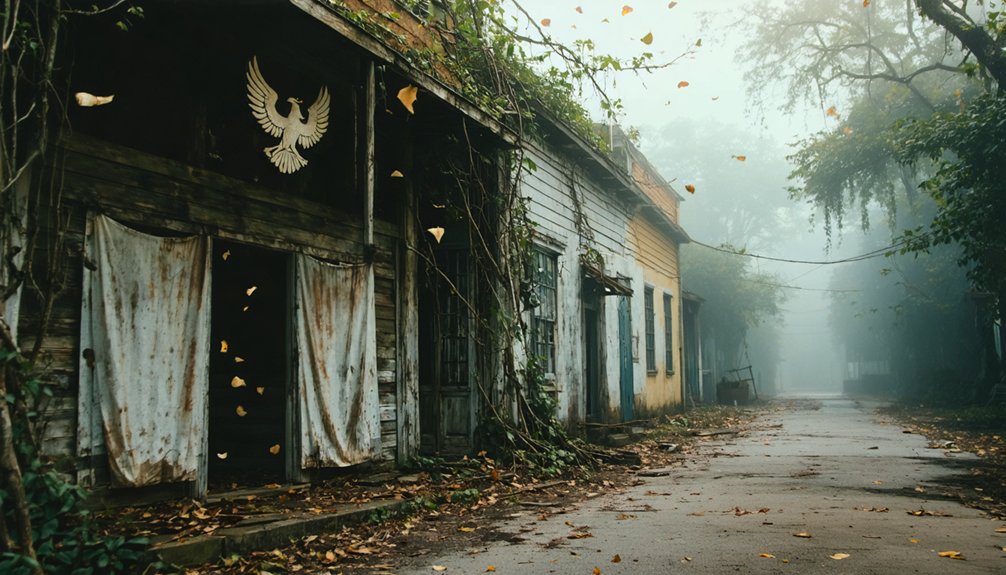
The rich tapestry of Albany’s cultural heritage stems from its Arbreshe roots – ethnic Albanians who first settled in Sicily before migrating to Louisiana in the late 19th century.
You’ll find that these immigrants maintained their distinct Albanian customs and Greek Orthodox faith while blending seamlessly into the broader Italian-American community.
Unlike in Sicily, where the Arbëresh language endured, Albany’s community identity evolved through generations of intermarriage and cultural assimilation.
While no formal Albanian quarter emerged, families preserved their heritage through oral histories and traditional practices.
Though many younger descendants have lost direct connections to their Arbreshe ancestry, some are now rediscovering these roots.
Their legacy lives on through prominent families like the Schiros and Loyacanos, who’ve shaped local business and politics while subtly influencing the region’s distinctive character.
Architectural Remains and Physical Evidence
Despite extensive searches for physical remnants of Albany’s past, you’ll find remarkably few intact structures at this Louisiana ghost town site. The architectural significance of Albany has largely faded due to decades of structural decay and environmental forces.
You might spot scattered foundations, partial walls, or buried fireplace remains beneath layers of vegetation and sand – typical features of early rural settlements in Caddo Parish.
Unlike other Louisiana ghost towns with preserved sawmills or landmark buildings, Albany’s physical evidence remains sparse. No substantial industrial structures persist, and the town’s original layout can only be traced through scattered ruins and disturbed earth.
The humid subtropical climate has accelerated wood rot and collapse, while natural processes continue to obscure what little remains of this once-inhabited settlement.
Tales of Unexplained Disappearances
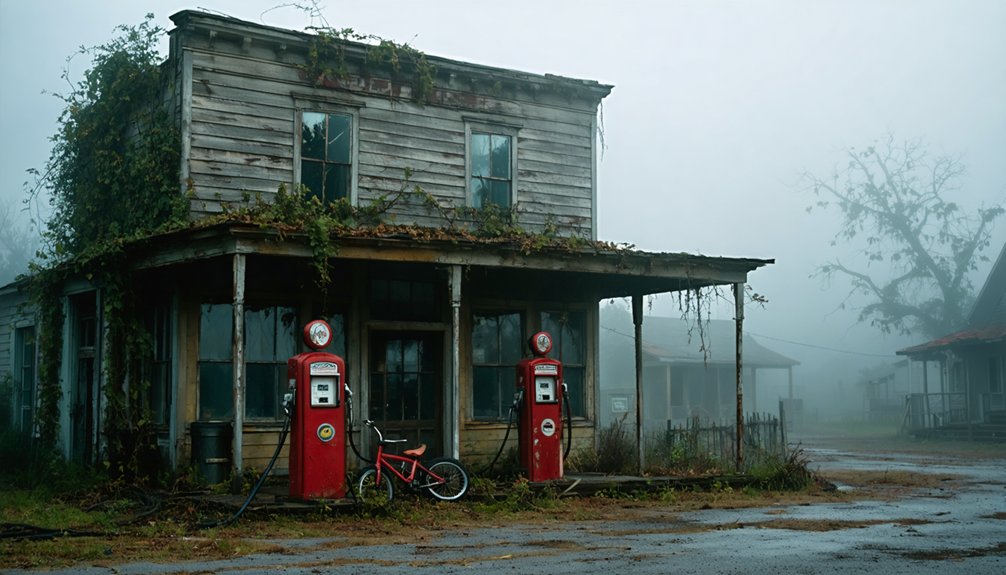
Local folklore surrounding Albany interweaves documented health crises with more sensational tales of unexplained disappearances, particularly during the 1970s.
Strange disappearances and deadly epidemics blend together in Albany’s dark history, creating an unsettling tapestry of local legend.
You’ll find that these disappearance theories often center around women and children, with numerous accounts linking vanishings to a mysterious phenomenon known as the “Albany Light.” Residents from neighboring towns like Holden and Springfield have reported ghostly encounters with this glowing apparition.
While disease outbreaks, especially malaria, contributed to the town’s documented population decline in the 19th century, the supernatural elements remain unverified.
When you explore these stories today, you’ll discover that most evidence stems from oral histories and anecdotal claims rather than official records. The tales continue to captivate visitors and shape the cultural identity of this haunted region.
Regional Trade and Transportation Networks
Situated strategically within Caddo Parish, Albany once thrived as an essential node in northwest Louisiana’s intricate trade network, leveraging its proximity to the Red River and major commercial arteries.
You’ll find evidence of the town’s transport evolution through its multi-modal connections, from riverboats to streetcars and rail lines that kept goods and people flowing through the region.
The town’s trade dynamics shifted dramatically as the area’s economic landscape transformed.
While you might’ve once caught a trolley from Albany to larger commercial hubs or watched steamboats load cotton and timber for export, these crucial transport links gradually faded.
Industrial development in neighboring parishes and the mechanization of agriculture bypassed Albany, leading to diminished connectivity and eventual abandonment of its once-bustling trade infrastructure.
The Town’s Gradual Abandonment
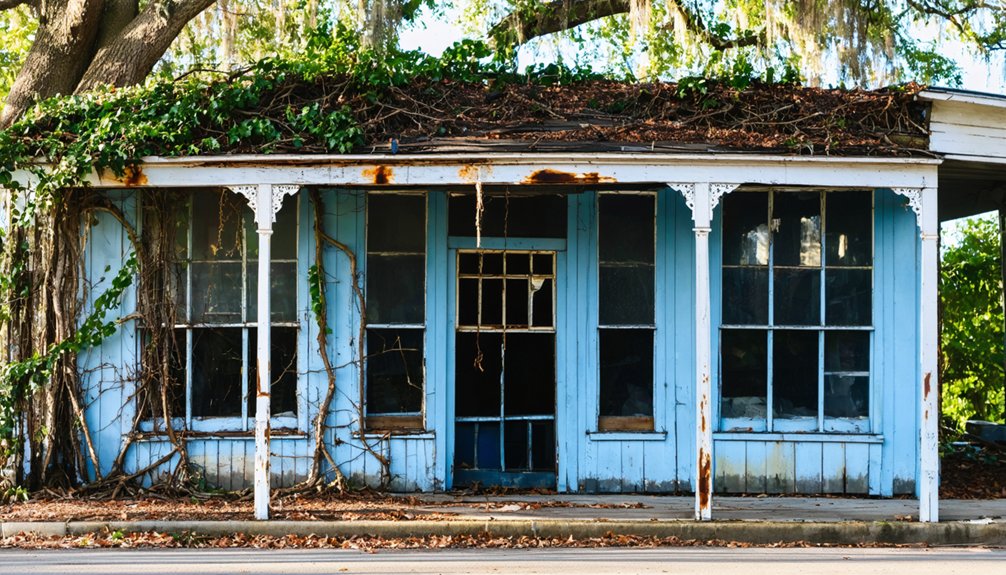
The deterioration of Albany’s vibrant commercial networks marked the beginning of its slow descent into abandonment.
You’ll find the town’s decline closely tied to shifting economic factors, as steamboat navigation gave way to newer transportation routes that bypassed the area entirely. This isolation triggered a chain reaction of business closures and factory shutdowns, leaving residents with few employment options.
Population dynamics tell a stark story of outward migration, particularly among younger generations seeking opportunities elsewhere.
As people left, crucial community institutions like schools and churches disappeared, further weakening social bonds.
The combination of economic stagnation, transportation changes, and environmental pressures ultimately sealed Albany’s fate.
Today, you’ll see only empty buildings and historical markers as evidence of what was once a thriving river town.
Paranormal Folklore and Local Traditions
Among Albany’s most enduring paranormal tales, you’ll find the mysterious “Albany Light” phenomenon, which locals have reported seeing on an old dirt logging road behind Goodwin Ballpark.
The unexplained light became intertwined with darker stories of missing women and children from Livingston Parish during the 1970s, though no concrete evidence has linked the apparition to any disappearances.
You can still join local ghost-hunters who frequent the area, especially around Halloween, continuing a tradition of supernatural investigation that has become part of Albany’s haunted identity.
The Mysterious Albany Light
Deep within Louisiana’s ghostly folklore lies the enigmatic Albany Light, a mysterious luminous phenomenon that has captivated locals and visitors since the 1970s.
You’ll find this unexplained apparition primarily on an old dirt logging road behind Goodwin Ballpark, where witnesses report seeing an eerie, glowing orb that moves erratically through the night sky.
Despite numerous Albany sightings by multiple witnesses, no one’s captured conclusive evidence of its source. The phenomenon has become a cornerstone of local paranormal tourism, drawing curious visitors hoping to glimpse the mysterious light.
Local legends suggest it’s connected to the spirits of missing women and children, while others believe it’s tied to the town’s abandoned past. The light’s sporadic appearances and unpredictable nature have only deepened its mystique in Louisiana’s rich supernatural history.
Missing Persons Legends
Since the 1970s, Albany’s haunting reputation has intertwined with numerous unexplained disappearances, particularly those of women and children throughout Livingston Parish.
You’ll find the community’s oral traditions blending actual missing person cases with supernatural explanations, creating a rich tapestry of local folklore that’s been passed down through generations.
The region’s most notable cold case, William Woolheater’s disappearance, continues to fuel paranormal theories among residents.
Local storytelling gatherings often focus on these unsolved mysteries, where you’ll hear tales of the Rougarou, a legendary creature said to prey on the missing.
These stories serve as both cautionary tales and a form of communal memory, keeping alive the histories of those who’ve vanished while drawing curious visitors to sites associated with the disappearances.
Local Ghost-Hunting Traditions
The mysterious disappearances have sparked a thriving ghost-hunting culture in Albany, where local paranormal investigators regularly gather to explore the town’s haunted sites.
You’ll find them armed with temperature gauges and electromagnetic field meters, particularly drawn to locations like old basements and construction pits where unexplained phenomena are frequently reported.
The area’s ghost tours incorporate both the famous “Albany Light” sightings and stories of tragic deaths, like the stonemason trapped in a construction pit.
Local investigators blend traditional ghost-hunting methods with regional spiritual practices, acknowledging the influence of Voodoo and Creole traditions.
They’ve documented numerous instances of flickering lights, shadowy figures, and unexplained cold spots, adding to Albany’s reputation as a significant location in Louisiana’s paranormal landscape.
Legacy in Modern-Day Caddo Parish
Modern visitors to Caddo Parish can still glimpse remnants of Albany’s influence through its ghost town legacy, which exemplifies broader patterns of settlement evolution in northwestern Louisiana.
The town’s story highlights critical lessons about heritage preservation and community resilience, serving as a tangible reminder of how economic shifts can transform local landscapes.
You’ll find that Albany’s abandoned structures and forgotten pathways contribute to the parish’s rich historical tapestry, offering insights into past settlement patterns and demographic changes.
While Shreveport now dominates as the region’s economic hub, Albany’s ghost town status helps you understand the challenges rural communities face in maintaining their liveliness.
The site adds depth to local cultural tourism efforts and supports educational initiatives about the parish’s dynamic past.
Frequently Asked Questions
What Was the Peak Population of Albany During Its Most Prosperous Period?
You’ll find Albany’s peak population reached roughly 1,200-1,500 residents during its prosperous period, marked by Hungarian population growth before economic decline eventually transformed the vibrant settlement.
Were There Any Notable Civil War Events or Battles in Albany?
You won’t find any significant Civil War battles or events in Albany’s history. While southeastern Louisiana saw military action during the war, Albany remained outside the main zones of conflict.
What Native American Tribes Originally Inhabited the Albany Area?
With over 10,000 years of indigenous history in Louisiana, you’ll find the Houma, Bayougoula, and Acolapissa tribes originally inhabited the Albany region, sharing Muskogean language roots and cultural significance along waterways.
When Was the Last Recorded Permanent Resident Living in Albany?
You won’t find documented proof of Albany’s last resident in historical records. While research confirms it’s now a ghost town, specific details about when the final inhabitant left remain unclear.
Did Any Famous Historical Figures Ever Visit or Stay in Albany?
You won’t find any famous visitors in Albany’s historical records. While the town played its part in steamboat navigation, no documented evidence suggests any historically significant figures stayed there.
References
- https://albanyherald.com/news/local/little-known-ghost-town-exists-right-up-the-road-from-albany/
- https://bayoujustice.com/2023/10/did-albany-light-call-louisianas-missing/
- https://etsn.fm/ixp/33/p/7-louisiana-ghost-towns/
- https://kids.kiddle.co/Albany
- https://www.shreveporttimes.com/story/news/2025/09/04/does-louisiana-have-any-ghost-towns-how-many-are-there-where-to-find-abandoned-towns/85972403007/
- https://en.wikipedia.org/wiki/List_of_ghost_towns_in_Louisiana
- https://www.ghostsofamerica.com/7/Louisiana_Albany_ghost_sightings.html
- https://steamboats.com/museum/davet-waybills8.html
- https://louisianagenealogygirl.wordpress.com/2020/03/17/splane-house-and-the-days-of-steamboat-captains/
- https://apps.dtic.mil/sti/tr/pdf/ADA391853.pdf
